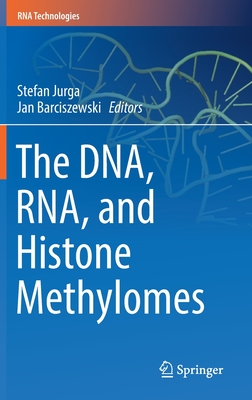Encyclopedia of Plant Viruses and Viroids
暫譯: 植物病毒與病毒類的百科全書
Sastry, K. Subramanya, Mandal, Bikash, Hammond, John
- 出版商: Springer
- 出版日期: 2020-01-04
- 售價: $43,060
- 貴賓價: 9.5 折 $40,907
- 語言: 英文
- 頁數: 1485
- 裝訂: Hardcover - also called cloth, retail trade, or trade
- ISBN: 8132239113
- ISBN-13: 9788132239116
-
相關分類:
生物資訊 Bioinformatics
海外代購書籍(需單獨結帳)
相關主題
商品描述
Virology, a branch of biological science was developed with the discovery of Tobacco mosaic virus in 1898. Viruses are known to infect all sorts of living organism and those known to be restricted within plant kingdom are referred as plant viruses. Although a few groups of plant viruses are known to infect insect vectors, so far none of the plant viruses is known to infect higher animals including human beings. The size of plant viruses ranges between 16 and 2000 nm and generally organized with nucleic acids and protein in either cubic or helical symmetry resulting in isometric or rod shaped architecture. During 1971, another class of infectious phytopathogen containing only nucleic acids and no protein coat, and causing diseases similar to plant viruses was discovered in potato and referred as viroid (Singh 2014).
Plant viruses are important constraint in world agriculture. Of all the phytopathogens, studies of plant viruses have received special attention as they are difficult to manage. Numerous plant viruses are presently known globally and almost all the crop species are affected by one or the other viruses. Plant viruses were discovered in late 1880s. Over the last three decades, application of molecular methods revolutionized our understanding of plant viruses. Viruses are of simple biological identity that undergo continuous changes in their genetic makeup and thereby exist in numerous variants. The continuous evolution in viruses poses a great challenge in their identification and classification. No single property of viruses is adequate to identify them.
商品描述(中文翻譯)
病毒學是生物科學的一個分支,隨著1898年煙草花葉病毒的發現而發展起來。病毒被認為可以感染各種生物,而那些已知僅限於植物界的病毒被稱為植物病毒。雖然有少數植物病毒已知可以感染昆蟲媒介,但目前尚無植物病毒被發現能感染高等動物,包括人類。植物病毒的大小範圍在16到2000納米之間,通常由核酸和蛋白質組成,呈立方或螺旋對稱,形成等軸或棒狀的結構。1971年,發現了另一類僅含有核酸且沒有蛋白質外殼的傳染性植物病原體,並引起類似植物病毒的疾病,這種病原體在馬鈴薯中被稱為小病毒(viroid)(Singh 2014)。
植物病毒是全球農業中的重要限制因素。在所有植物病原體中,植物病毒的研究受到特別關注,因為它們難以管理。目前已知的植物病毒數量眾多,幾乎所有的作物物種都受到某種病毒的影響。植物病毒的發現可以追溯到1880年代末。在過去的三十年中,分子方法的應用徹底改變了我們對植物病毒的理解。病毒的生物特性相對簡單,但其遺傳組成不斷變化,因此存在許多變異株。病毒的持續進化對其識別和分類提出了巨大挑戰。沒有單一的病毒特性足以用來識別它們。
作者簡介
Dr. K. Subramanya Sastry is currently retired and has last worked as Principal Scientist (ICAR), National Research Centre for Sorghum, Rajendranagar, Hyderabad from 1991 to 1998. His areas of interest are teaching and research in plant Virology, pathology, Microbiology. He has total 27 years of extension experience in Indian council of Agricultural Research and 5 years of teaching experience in Department of Botany, S.V. University, Tirupati. He has published total of 5 books and 83 research papers. Published three books on plant virology from Springer during 2012-14.
Dr. Bikash Mandal is currently working as Principal Scientist in Advanced Center for Plant Virology, Indian Agricultural Research Institute (IARI), New Delhi. His research and teaching area is Plant Virology. He has total 153 publications that includes 2 books, 8 book chapters, 72 research papers, 5 popular technical articles, 65 conference abstracts. He is the editor-in-Chief of Journal 'VirusDisease' (Springer) and VirusResearch news (Newsletter).
Dr. John Hammond is currently working as Research Plant Pathologist, United States Department of Agriculture, Agricultural Research Service, Floral and Nursery Plants Research Unit, Beltsville. His major areas of research are viruses affecting ornamental crops, with emphasis on potyvirus, potexvirus and carlavirus detection, differentiation, and methods of introducing resistance, use of transgenic plants to examine virus resistance and infectious viral clones to determine factors affecting host range, symptom induction, and systemic movement, and development of microarrays for plant virus detection and identification.
Dr. Simon W. Scott has recently retired from Clemson University as a Professor Emeritus in Plant Pathology. His major areas of research were viruses and virus-like agents affecting woody deciduous species with an emphasis on those viruses that affect the dominant fruit crop in South Carolina (peaches). He has established a program to index large blocks of peach trees in the southeastern USA prior to propagation as part of the USDA/APHIS National Clean Plant Network. In addition he has produced extensive sequence data for a number of Ilarviruses allowing long-standing taxonomic anomalies to be corrected.
Dr. Robert William Briddon has worked as Principle Investigator in Agricultural Biotechnology Division, National Institute of Biotechnology and Genetic Engineering (funded by United States Department of Agriculture (USDA) through the International Centre for Agricultural Research in the Dry Areas (ICARDA, Islamabad Office). His research area is in study of vector transmission of plant infecting viruses. Particularly the interactions involved between virus and insect vector of circulatively and propagatively transmitted viruses and the evolution thereof. He has total 135 publications in ISI Web of knowledge. He is also a member of British Society for Plant Pathology, European Whitefly Study Network and International Committee on Taxonomy of Viruses.
作者簡介(中文翻譯)
K. Subramanya Sastry 博士目前已退休,最後擔任印度農業研究委員會(ICAR)國家高粱研究中心的首席科學家,任職於海得拉巴的 Rajendranagar,時間為1991年至1998年。他的研究興趣包括植物病毒學、病理學和微生物學。他在印度農業研究委員會擁有27年的推廣經驗,以及在 S.V. 大學(Tirupati)植物學系的5年教學經驗。他共出版了5本書和83篇研究論文,並於2012年至2014年間從 Springer 出版了三本有關植物病毒學的書籍。
Bikash Mandal 博士目前擔任印度農業研究所(IARI)植物病毒學高級中心的首席科學家。他的研究和教學領域為植物病毒學。他共發表了153篇出版物,包括2本書、8章書籍、72篇研究論文、5篇流行技術文章和65篇會議摘要。他是《VirusDisease》(Springer)期刊和《VirusResearch news》(通訊)的主編。
John Hammond 博士目前擔任美國農業部農業研究服務局的研究植物病理學家,工作單位為 Floral and Nursery Plants Research Unit,位於 Beltsville。他的主要研究領域為影響觀賞作物的病毒,特別是針對 potyvirus、potexvirus 和 carlavirus 的檢測、區分及引入抗性的方法,利用轉基因植物檢驗病毒抗性,以及感染性病毒克隆以確定影響宿主範圍、症狀誘導和系統性運動的因素,並開發植物病毒檢測和識別的微陣列技術。
Simon W. Scott 博士最近從克萊姆森大學退休,擔任植物病理學的名譽教授。他的主要研究領域為影響落葉樹種的病毒及類病毒因子,特別是影響南卡羅來納州主要水果作物(桃子)的病毒。他建立了一個計畫,對美國東南部的大型桃樹區進行指標檢測,以便在繁殖之前作為 USDA/APHIS 國家清潔植物網絡的一部分。此外,他還為多種 Ilarvirus 生產了大量序列數據,從而修正了長期存在的分類學異常。
Robert William Briddon 博士曾擔任農業生物技術部門,國家生物技術與基因工程研究所的首席研究員(由美國農業部(USDA)通過乾燥地區國際農業研究中心(ICARDA,伊斯蘭堡辦事處)資助)。他的研究領域為植物感染病毒的媒介傳播研究,特別是病毒與循環性和傳播性傳播病毒的昆蟲媒介之間的相互作用及其演化。他在 ISI Web of Knowledge 上共發表了135篇出版物,並且是英國植物病理學會、歐洲白蝴蝶研究網絡及國際病毒分類委員會的成員。











